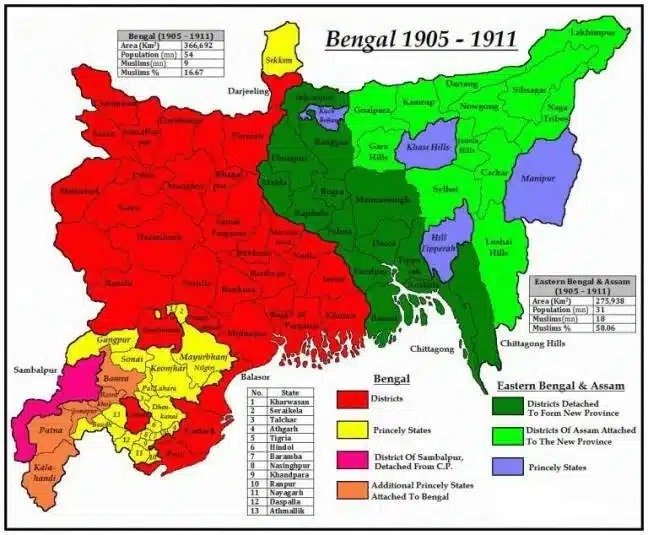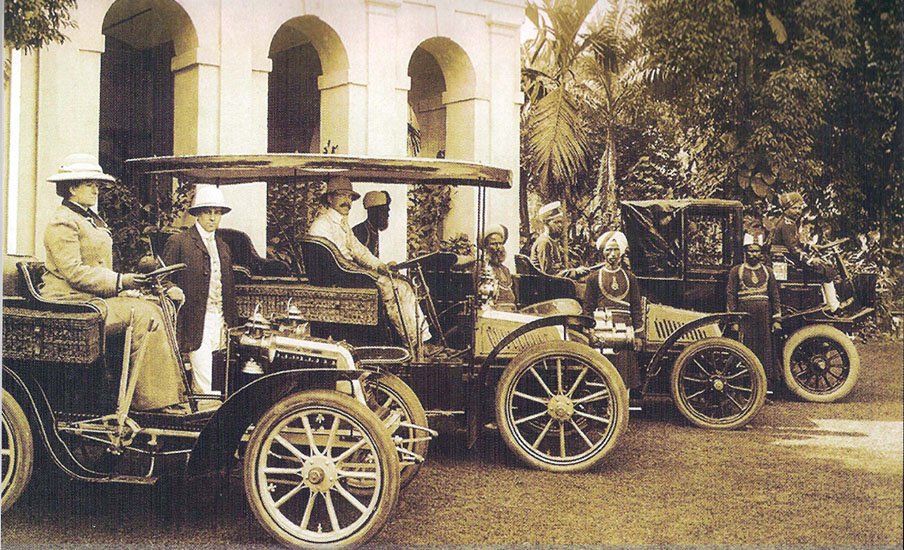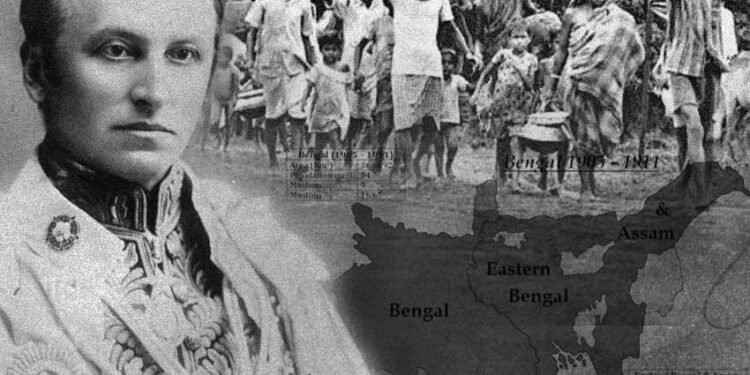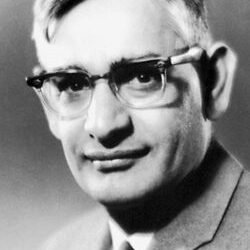Introduction
The Partition of Bengal in 1905 was a pivotal event in the Indian freedom struggle, aimed at dividing most of Bengal into two parts by the British colonial administration. Announced by the then Viceroy and Governor-General of India, Lord Curzon, the partition was justified on administrative grounds but widely perceived as a deliberate ‘divide and rule’ strategy by the British. The move sparked widespread outrage, igniting the Swadeshi and Boycott Movements and causing a significant split in the Indian National Congress. The Partition of Bengal marked a critical moment in intensifying nationalist sentiments and reshaped the Indian struggle for independence in the early 20th century.

Background and Political Context
At the beginning of the 20th century, Bengal was the largest province in British India by both area and population, comprising over 80 million people. The province’s sheer size posed administrative difficulties for the British, which was the official rationale given for partition.
However, the subdivision had a much deeper political motive. Bengal was a hotbed of nationalist activity and intellectual ferment. The British feared growing Hindu-Muslim unity in Bengal and aimed to weaken this by splitting the province along religious lines—creating a Muslim-majority province of Eastern Bengal and Assam, effectively isolating the Hindu population in Western Bengal. The British belief was that this division would curb nationalist agitation and consolidate control by playing on communal divisions.
The Partition Announcement and Administrative Details
On July 19, 1905, Lord Curzon announced the official decision to partition Bengal, effective from October 16, 1905. The division created two provinces:
Eastern Bengal and Assam, with Dacca (Dhaka) as the capital, a predominantly Muslim majority area comprising Sylhet and the Brahmaputra valley.
Western Bengal, with Calcutta (Kolkata) remaining the capital, mainly Hindu dominant.
The partition affected economic, political, social, and educational institutions across the region, interrupting established trade and cultural linkages.
Nationalist Reaction: Swadeshi and Boycott Movements
The announcement led to immediate and intense opposition from Indian nationalists, especially from Hindus in Calcutta and Western Bengal. The Indian National Congress, Hindu Mahasabha, and numerous local organizations vehemently protested the decision.
The movement against the partition gave rise to the Swadeshi (self-reliance) campaign, which aimed at promoting Indian-made goods and boycotting British products and institutions. Public meetings, processions, and strikes became widespread, turning the opposition into a mass movement. Women and students played an active role, and the protest spread beyond Bengal to other parts of India, inspiring a national awakening.
Notable leaders like Bipin Chandra Pal, Bal Gangadhar Tilak, and Lala Lajpat Rai, collectively known as Lal-Bal-Pal, emerged as prominent voices against the British, advocating more militant and aggressive resistance strategies.
Impact on Indian National Congress and Political Landscape
The Partition deepened divisions within the Indian National Congress, previously united around moderate protest. The 1907 Surat session of Congress revealed a split between moderates, who sought constitutional reforms, and extremists, who favored direct action, boycotts, and national unity as weapons against British rule. This polarization affected Congress politics for decades.
Furthermore, the British strategy of communal segregation sowed seeds of Hindu-Muslim divisions, influencing political alignments and tensions that continued through the 20th century. The creation of separate provinces for communities hardened identities, complicating future nationalist negotiations and unity.
British Response and Reversal
Realizing the movement’s intensity and mass support, combined with British commercial and administrative difficulties caused by the ongoing boycott, the British government reconsidered the partition.
In 1911, the partition was annulled, and Bengal was reunited in its pre-1905 boundaries. Simultaneously, the capital of British India was shifted from Calcutta to Delhi to curb nationalist fervor in Bengal. The annulment was seen as a tactical retreat but failed to fully pacify nationalist demands, who now pushed for self-rule and complete independence.
Long-term Significance
The Partition of Bengal was more than a mere administrative change; it was a turning point that awakened nationalist consciousness across India. The Swadeshi movement introduced economic nationalism and mass political mobilization, setting the stage for subsequent revolutionary and civil disobedience movements.
The British reliance on divisive politics foreshadowed communal divisions that eventually culminated in the partition of India in 1947. The events of 1905 inspired generations of freedom fighters and catalyzed India’s transformation from elite-led political agitation to a mass-based nationalist movement.

Conclusion
The Partition of Bengal in 1905, despite its annulment, left an indelible mark on the Indian independence struggle. It exposed the limits of British colonial rule, demonstrated the power of unified mass resistance, and highlighted the challenges of communal politics. The episode remains a testament to the early nationalist efforts to forge Indian unity and challenge colonial authority.




